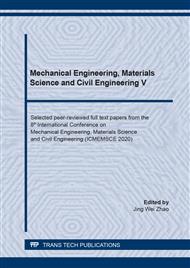[1]
Information on http://textilelearner.blogspot.com/2011/12/what-is-color-fastness-classification.html.
Google Scholar
[2]
E.M. Hinsch, G. Weber, H.L. Chen, S.C. Robinson, Colorfastness of extracted wood-staining fungal pigments on fabrics: A new potential for textile dyes, J. Text. Appar. Technol. 9 (3) (2015) 1-11.
Google Scholar
[3]
Information on https://textilecourse.blogspot.com/2018/07/colour-fastness-rubbing-test-method.html.
Google Scholar
[4]
S. Salam, L.J. Rather, M. Shahaid, F. Mohammad, Study the effect of ammonia post-treatment on color characteristics of annatto-dyed textile substrate using reflectance spectrophotometry, Ind. Crops Prod. 59 (2014) 337-342.
DOI: 10.1016/j.indcrop.2014.05.041
Google Scholar
[5]
K. M. Zia, S. Tabassum, S. Barkaat-ul-Hasin, M. Zuber, T. Jamil, M.A. Jam, Preparation of rich handles soft cellulosic fabric using amino silicone based softener, part II: Colorfastness properties, Int. J. Biol. Macromol. 49 (1) (2011) 1-6.
DOI: 10.1016/j.ijbiomac.2011.01.025
Google Scholar
[6]
Information on http://www.manufacturingsolutionscenter.org/colorfastness-to-perspiration-testing.html.
Google Scholar
[7]
American Association of Textile Chemist and Colorists (AATCC). Technical Manual: Volume 92. North Carolina: American Association of Textile Chemists and Colorists. 2017. pp.21-23.
DOI: 10.1002/0471740039.vec0146
Google Scholar
[8]
The International Organization for Standardization. International Standard ISO 105-E04; Textiles-Tests for Colour Fastness – Part E04: Colour fastness to perspiration. Geneva: International Organization for Standardization. 2013. pp.1-10.
DOI: 10.3403/30240216
Google Scholar


